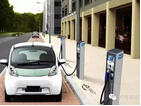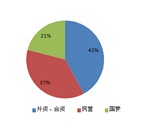Domestic consumers still have a heavier charging anxiety for electric vehicles. However, the number of charging facilities can fully meet the charging requirements of existing electric vehicles. The problem is that the utilization rate of public charging piles is low, less than 15%.

From policy driven to full market driven
Zhang Fan pointed out that the development of new energy vehicles was mainly driven by policies. Consumers mainly chose electric vehicles because of government restrictions on purchases. At present, both policy-driven and market-driven, and will enter the stage of full market-driven. In addition to personal subsidies when buying a car, new energy vehicles can also enjoy electricity price concessions. After 2025, these policies will also be abolished. After full marketization, it will force the enterprises to reduce costs, improve the quality of products and services, and make new energy vehicles truly compete with fuel vehicles.
According to Zhang Fan, the three major bottlenecks restricting the development of new energy vehicles need to be broken. In terms of driving mileage, it is necessary to break through the power battery technology and improve the energy efficiency level of the vehicle. In terms of vehicle cost, it is necessary to further reduce the battery cost and make full use of it. Non-financial incentives reduce the cost of the entire life cycle; in terms of charging time and convenience, while improving the charging performance and charging technology of the battery, it is also necessary to realize the networking of the charging facility.
In Zhang Fan's view, the development of charging infrastructure to ensure the charging of electric vehicle owners is the responsibility of new energy vehicles. In foreign countries, such as the United States, Germany and Japan, vehicle companies have developed a global strategy for charging infrastructure, investing a lot of money in the development and promotion of charging piles, and also provides opportunities for charging pile manufacturers. Among them, BMW, Volkswagen, Ford and Daimler plan to promote a new generation of charging pile technology in Europe that can fully charge a single electric vehicle in one hour. In 2017, the Tesla charging network doubled. Expansion of existing charging locations reduces user waiting time and increases the number of charging piles in the city center; Toyota, Nissan, Honda and Mitsubishi jointly provide funding for charging stations and actively cooperate with charging operators. In contrast, the charging piles currently established by domestic new energy auto companies are mostly time-shared and other projects, and participate in the construction of public charging piles.
Shen Fei, vice president of Weilai Automotive Power Management Department, said in the forum that in the next 8 to 10 years, the overall cost difference between electric vehicles and traditional vehicles will not be very large. In the next 3 to 5 years, the charging time will be affirmed. It will take longer than refueling. Therefore, what enterprises need to do is to reduce the cost of using electric vehicles and enhance the user experience as much as possible, and to give users the freedom to charge, such as laying power exchange stations and deploying mobile charging vehicles. Among them, the mobile charging car is not an emergency means, but a conventional means of supplementing electricity.
Public charging pile usage needs to be improved
China's electric vehicle charging technology facilities promotion alliance data show that from 2015 to 2017, China's new energy vehicles have achieved three world firsts: new energy vehicle production and sales and holdings first, power battery shipments first, public The number of charging facilities is the number one. From January to December 2017, the total sales of new energy vehicles totaled 777,000 units, a year-on-year increase of 53.3%, accounting for 2.7% of the market, accounting for 60% of the global new energy vehicles; the number of new energy vehicles is more than 1.7 million, accounting for 55% of global ownership.
According to the statistics of China Association of Automobile Manufacturers, from January to July 2018, the production and sales of new energy vehicles were 504,000 and 496,000, respectively, an increase of 85% and 97.1%. Among them, the production and sales of pure electric vehicles were 382,000 and 373,000, respectively, an increase of 71% and 82.4%.
Corresponding to the rapid development of electric vehicles is the construction of charging piles: According to the data of China Electric Vehicle Charging Technology and Industry Alliance, as of July 2018, the members of the alliance reported a total of 274,800 public charging piles, and the number of private charging piles. About 337,900.
“The total amount of domestic charging facilities is quite large, which can satisfy the charging user market of domestic electric vehicles.” Zhang Fan said that the European car pile is more than 10:1, and China’s 2015 pile-to-pile ratio is close to 1:1. It can be said that the current number of charging piles is completely sufficient. The problem is that the utilization rate of public charging piles is very low, estimated to be less than 15%, and the proportion of private cars using public charging piles is still low.
Zhang Fan believes that in the absence of a wide range of electric vehicle market, excessive development of charging infrastructure is also a waste of resources. Therefore, after the personal subsidy is cancelled, a policy is needed to guide users to use the public charging pile more. In the future, the main purpose of public charging facilities is not to charge, but to quickly replenish electricity. "90% of users will choose to charge slowly in their homes, offices and shopping malls. Public charging piles are only complementary means of temporary power supply."
Liu Jian also suggested that charging facility operators should be encouraged to enter more flexible areas such as residential and office space, while reducing power thresholds, allowing third-party platforms to access the grid on a large scale, and promoting the integration of electric vehicles into the grid to optimize User experience and charging price.
















 RCCN WeChat QrCode
RCCN WeChat QrCode Mobile WebSite
Mobile WebSite







